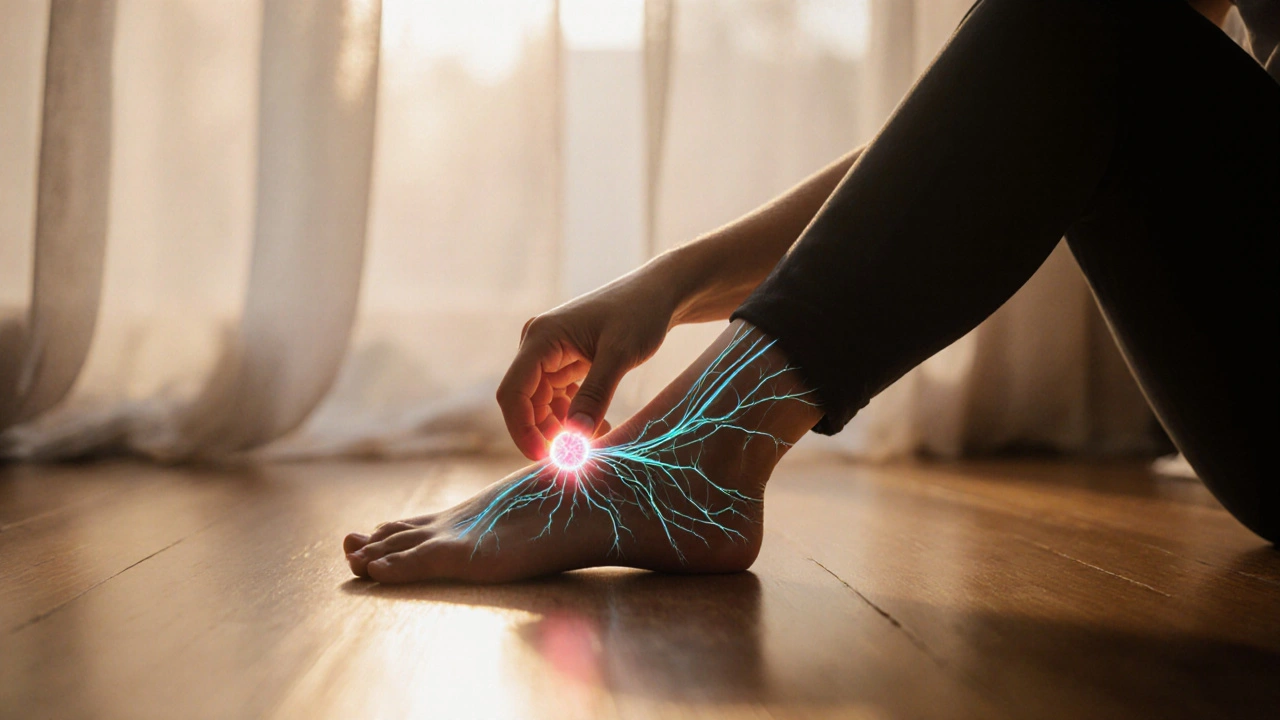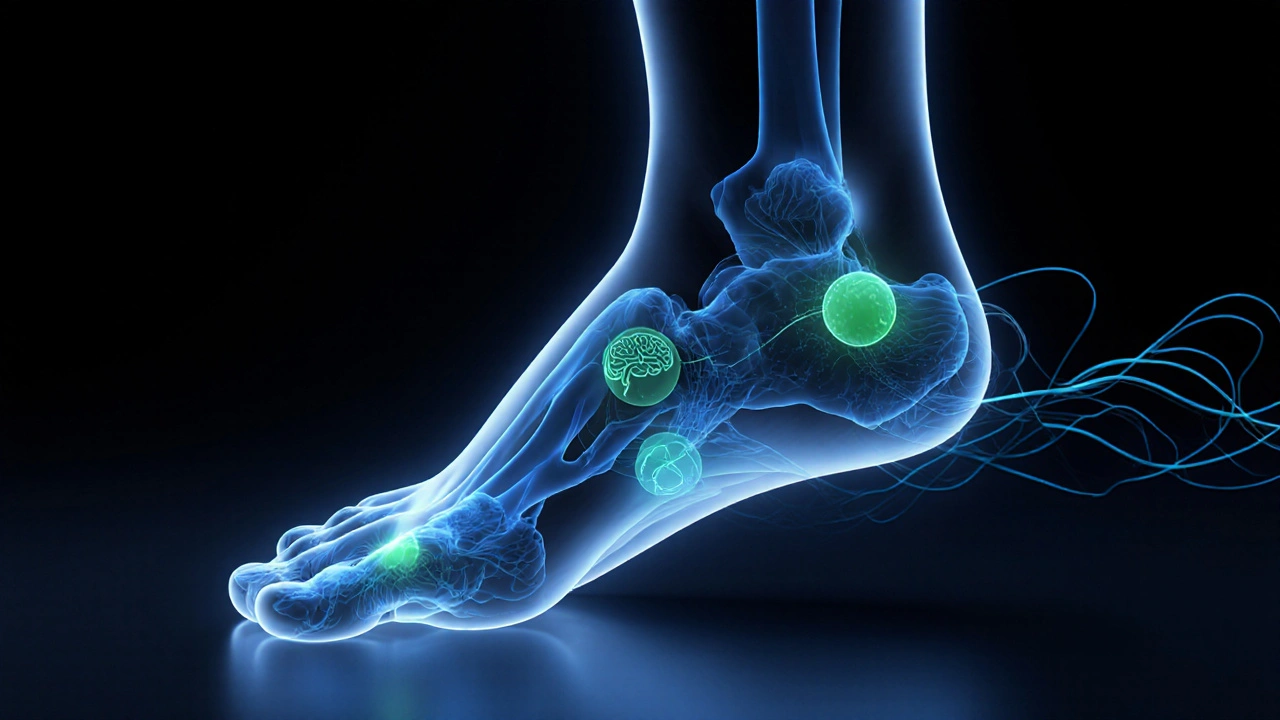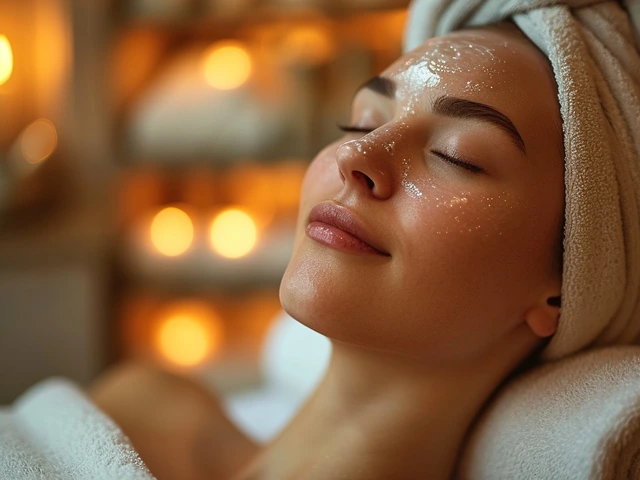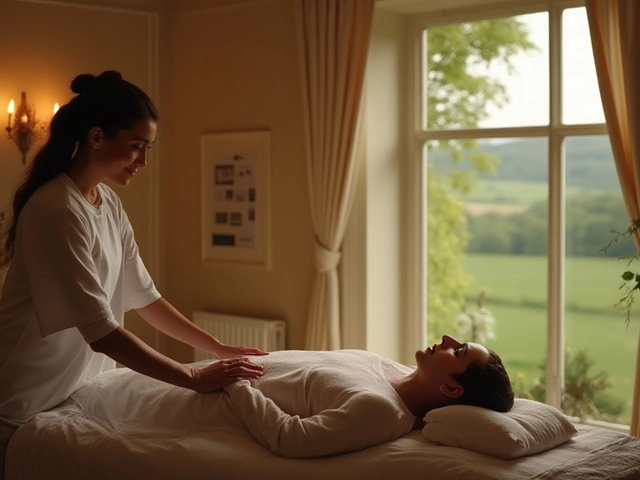Discovering the Magic of Reflexology: How Foot Pressure Can Transform Your Well-Being

Reflexology Point Finder
Find Your Reflexology Points
Select your symptom to discover the corresponding reflexology points for relief.
Recommended Reflexology Points
Have you ever pressed on the ball of your foot and felt a strange twinge in your shoulder? Or noticed how rubbing your toes after a long day somehow makes your whole body feel lighter? That’s not coincidence. It’s reflexology - an ancient practice that’s quietly helping millions reset their nervous system, ease pain, and find calm without a single pill.
What Exactly Is Reflexology?
Reflexology isn’t just a foot massage. It’s a targeted therapy based on the idea that specific spots on your feet, hands, and ears connect to organs and systems throughout your body. Think of it like a map. The left foot corresponds to the left side of your body, the right foot to the right. The ball of your foot links to your chest and heart. The arch connects to your digestive organs. The heel? That’s your lower back and intestines.
This isn’t new. Evidence shows reflexology was practiced in ancient Egypt over 4,000 years ago. Wall carvings from the tomb of Ankhmahor show people receiving foot and hand treatments. In the early 1900s, American physician Dr. William Fitzgerald introduced zone therapy, which later evolved into modern reflexology thanks to Eunice Ingham, a physical therapist who mapped out the foot in detail. Today, trained reflexologists use precise thumb and finger pressure - not deep kneading - to stimulate these points.
How Reflexology Works (Without Magic)
It’s not mystical. Science points to the nervous system as the key player. When pressure is applied to a reflex point on the foot, nerve signals travel to the spinal cord and brain. This triggers a relaxation response, lowering cortisol and shifting your body from fight-or-flight mode into rest-and-digest mode.
A 2023 study in the Journal of Evidence-Based Integrative Medicine found that participants with chronic lower back pain who received weekly reflexology sessions for eight weeks reported a 42% reduction in pain intensity - compared to just 11% in the control group. Another trial with cancer patients showed improved sleep and reduced nausea after reflexology treatments.
It doesn’t cure diseases. But it helps your body do what it’s already designed to do: heal, balance, and recover. Think of it like hitting the reset button on your stress response.
The Most Powerful Reflex Points to Know
You don’t need a professional to get started. Here are five key areas you can explore at home:
- Big toe: Represents your brain and head. Pressing here gently can ease tension headaches and mental fog.
- Ball of the foot: Linked to your lungs and heart. Use your thumb to make small circles here - great for shallow breathing or anxiety.
- Arch area: Corresponds to your stomach, liver, and pancreas. Firm, slow pressure here can help with bloating or indigestion after meals.
- Inner edge of the foot: Runs from the heel to the ball, mirroring your spine. Roll a tennis ball under this area to release tightness.
- Heel: Connects to your lower back and pelvic region. Ideal for women experiencing menstrual discomfort or anyone sitting too long at a desk.
Use your thumb or knuckle. Apply steady pressure for 15-30 seconds per point. Breathe deeply. Don’t push through pain - it should feel like a deep, satisfying ache, not sharp or burning.

What Reflexology Can and Can’t Do
Let’s clear up the myths.
Reflexology can help with:
- Reducing stress and anxiety
- Improving sleep quality
- Easing headaches and migraines
- Relieving digestive discomfort
- Supporting recovery after injury or surgery
It cannot:
- Cure cancer, diabetes, or heart disease
- Replace medical treatment
- Diagnose health conditions
- Detox your body (your liver and kidneys do that just fine)
Reflexology works best as a supportive tool - not a miracle cure. People who use it alongside conventional care often report feeling more in control of their health.
Who Should Try Reflexology?
Almost anyone can benefit - especially if you:
- Feel constantly tired or wired
- Have trouble sleeping
- Sit at a desk all day
- Deal with chronic pain or inflammation
- Are pregnant (with approval from your provider)
It’s also safe for older adults and children. Kids often respond quickly - one parent in Perth told me her 7-year-old started falling asleep faster after nightly foot rubs for school stress.
But avoid it if you have:
- Open wounds or infections on your feet
- Deep vein thrombosis (DVT)
- Severe osteoporosis
- Recent foot surgery
If you’re unsure, talk to your doctor. Reflexology is low-risk, but your health history matters.
How to Get Started - At Home or With a Pro
You can begin today with just your hands and 10 minutes.
- Find a quiet spot. Sit in a chair or lie down.
- Remove your shoes and socks. Warm your feet with a towel if they’re cold.
- Start with the ball of your foot. Use your thumb to press and release in slow circles for 30 seconds.
- Move to the arch, then the heel. Spend 20-30 seconds on each area.
- Finish by gently pulling each toe - it helps release tension in the spine.
Do this daily for a week. Notice how you feel. Many people report better sleep, less tension, or even improved digestion within days.
If you want deeper work, find a certified reflexologist. Look for someone trained by the American Reflexology Certification Board or Reflexology Association of Australia. Sessions usually last 45-60 minutes and cost between $60-$120. Most people feel relaxed, not sore, afterward.

Real Stories, Real Results
Emma, a nurse in Melbourne, started reflexology after years of shift work left her with chronic insomnia and migraines. After six weeks of weekly sessions, she went from averaging three hours of sleep a night to seven. "It didn’t fix my job, but it gave me back my body," she said.
James, 68, had knee osteoarthritis. He couldn’t walk more than 10 minutes without pain. His reflexologist focused on the heel and arch - areas linked to the knees. After three months, he noticed less stiffness in the morning and started walking his dog again. "It didn’t replace my physio, but it made the pain easier to live with."
Why Reflexology Stands Out Among Holistic Practices
Unlike acupuncture, which uses needles, or reiki, which involves energy channels, reflexology is tactile, simple, and safe. You don’t need special equipment. You don’t have to believe in energy fields. You just need your feet and a little time.
It’s also highly accessible. You can do it while watching TV, waiting for coffee, or before bed. No appointments. No cost. Just pressure.
And because it’s grounded in anatomy and neurology, not mysticism, it fits well into modern wellness routines - whether you’re a yoga enthusiast, a busy parent, or someone just trying to feel less worn out.
Final Thought: It’s Not About Fixing - It’s About Listening
Reflexology isn’t magic. But it’s powerful because it teaches you to listen to your body. That ache in your heel? Maybe it’s not just tiredness. That tightness under your toes? Could be stress building up.
By paying attention to your feet, you’re not just treating a symptom. You’re tuning into a signal your body’s been sending all along.
Can reflexology help with anxiety?
Yes. Studies show reflexology lowers cortisol levels and activates the parasympathetic nervous system, which calms the body. Many people report feeling more grounded and less overwhelmed after sessions, especially when focused on the ball of the foot and inner arch.
How often should you do reflexology?
For general wellness, 10-15 minutes daily at home is enough. If you’re dealing with chronic pain or stress, weekly professional sessions for 4-6 weeks followed by maintenance once a month works well. Listen to your body - if you feel more relaxed, you’re on the right track.
Does reflexology hurt?
It shouldn’t. You might feel a momentary pinch or deep ache on sensitive points - that’s normal. But sharp, burning, or radiating pain means you’re pressing too hard or there’s an underlying issue. Ease off. Reflexology is about gentle stimulation, not force.
Can I do reflexology if I’m pregnant?
Yes - but avoid the inner ankle and heel area during the first trimester, as those points are linked to the uterus. After the first 12 weeks, gentle foot reflexology is safe and often helps with swelling, back pain, and sleep. Always check with your midwife or OB-GYN first.
Is reflexology the same as a foot massage?
No. A foot massage relaxes muscles and improves circulation. Reflexology targets specific nerve points connected to organs and systems. It’s more precise, less about relaxation and more about communication - like sending a signal to your brain to turn down stress.
If you’ve ever wondered why your feet feel so connected to your whole body - now you know. It’s not magic. It’s biology. And sometimes, the simplest things - like pressing your thumb on your toe - can bring the deepest relief.





